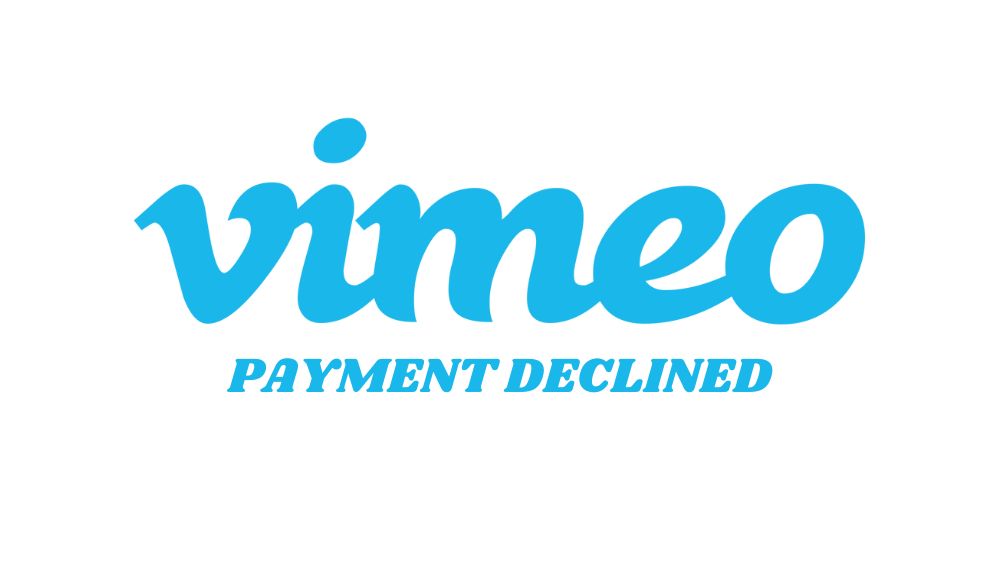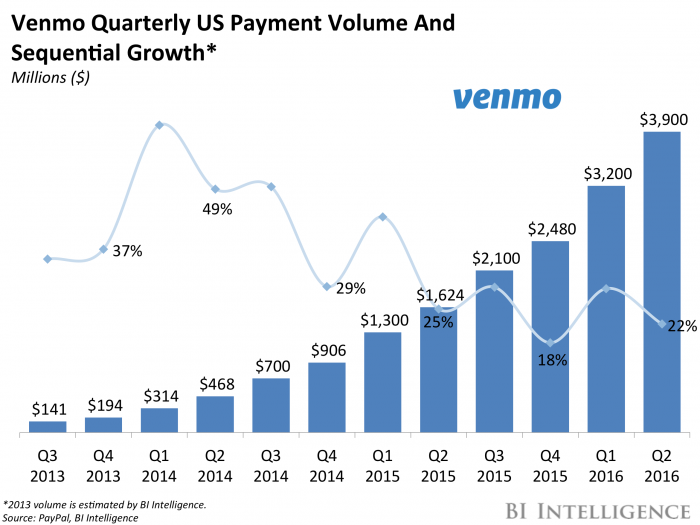
By max September 15, 2023
Is your Venmo payment declined? Here we’ve come up with a detailed guide on the possible causes of the Venmo payment decline and how you can use Venmo to successfully complete your payment.
Venmo has long been used for making online transactions. Its fee-free payment sending and receiving structure makes it an ideal choice among businesses and individuals who make daily transactions. However, Venmo isn’t immune to security risks. Like any money-exchanging app, Venmo has implemented many robust security protocols and a built-in fraud detection system that identifies fake transactions and declines them immediately.
However, sometimes, Venmo could decline an authentic transaction based on its algorithm and factors, like the relationship between the sender and the recipient, the size of the transaction, and so on. Knowing the exact cause of why your transactions are declined can get tricky.
What is Venmo and How Does it Work?

Image source: Venmo
Venmo is a text-based mobile payment system that enables users to send and receive money within a few clicks. It’s made peer-to-peer transactions a breeze. Currently, it’s owned by PayPal. Unlike bank transfers, Venmo is a comparatively faster app. You no longer need to wait for hours and even days for the payment to show up in the recipient’s account. It supports instant money transfers between peers and businesses. Venmo is widely used by eCommerce stores that support multiple payment options.

Although the app is primarily designed to facilitate payments between family and friends, people have started using it for commercial purposes. You will see many merchants using Venmo to send payments to authorized parties. They have also verified their Venmo accounts to increase their payment transfer limit. Note that while transferring payment through Venmo comes free, credit cards are subject to a flat 3% fee.
Venmo Payment Declined: Common Reasons Why It Was Declined
A business that accepts Venmo payments can suffer a heavy loss if its customers are unable to complete their transactions through this payment app. Likewise, for an individual splitting bills at a cafe, a declined payment on Venmo can lead to unnecessary conflicts. Pinpointing the exact cause of the payment decline can be difficult unless you are a tech-savvy user. Although we can’t tell the exact reason why your payment is not accepted, below we’ve compiled a list of the 8 common issues that can result in declined payments. Let’s take a look.
- Not Enough Balance
You must have sufficient bank balance or balance in your Venmo account to complete the transaction. Insufficient funds are a common cause of declined payments. Fortunately, fixing the issue is as simple as adding funds to your Venmo account and re-trying the payment. Before Venmo processes your transaction, it verifies whether the bank account linked to your Venmo has enough balance. If your account has sufficient balance, but your payment still declined, there might be another issue.
- Poor Network
Poor or unstable network is another reason why your transaction on Venmo can fail. Check the app and your internet connection to see if it’s working. Switch your mobile on and off or put it on airplane mode and try to connect again. This might fix the connectivity issue. Sometimes, the internet is working fine, but there’s a problem with the Venmo app. If that’s the case, update the app or check it on someone else’s mobile.
- You Exceeded the Limit
Venmo has set daily transaction limits, which vary for verified and unverified accounts. For instance, if you have an unverified Venmo account, your weekly transaction limit is up to $299.99. These are for peer-to-peer transactions. However, if you verify your profile and submit all other KYC documents to complete verification, your weekly transaction limit will increase to $60,000. It’s perfect for businesses that make frequent payments through Venmo or those that use Venmo as their primary source of online transactions. If you have exceeded the maximum transaction limit, you may have to switch to another payment method or wait for the week to be over, so you can start making payments again.
- Unverified Account
Not completing your profile or failing to link your bank account to Venmo can lead to failed transactions. Account verification is a must before you initiate a transaction. For instance, start by adding your personal details to Venmo and then linking your bank account to your profile.
Make sure you input all the information correctly, as even a small error in your bank account or other details can result in a failed transaction. Other than that, your transaction can fail if you have entered outdated information. For example, if the credit/debit cards you have linked to your profile have expired, that can be the reason for continuously failed payments. Update the cards or use another form of payment to complete your transaction on Venmo.
As mentioned before, you can’t transfer more than the minimum threshold with an unverified Venmo account. It requires you to verify your identity if you are transferring more than $299 a week.
- You have a Frozen Account
To increase its security, Venmo has implemented two-factor authentication for all its users. When logging into your Venmo account, you must enter your username and password, and complete the two-step verification process to confirm your identity to get access to your account. Too many wrong password attempts, however, can lead to a frozen account. If it suspects you as an unauthorized user, it will lock your account for a short while before allowing you to conduct more log-in attempts. If you need to transfer the payment urgently, contact their support team to have your account unlocked.
- Payment Declined by Your Bank
Sometimes, the issue is with the customer’s bank account or card company. If the issuing bank suspects a fraudulent transaction on your Venmo account, it may decline the payment processing. If that’s the case, you will need to contact your bank to have it resolved. As mentioned previously, an outdated or expired card and incorrect bank details might contribute to the declined transaction. So before you reach out to your bank, double-check your card details to see if you have entered everything correctly.
- High Volume Transaction
Venmo has a strict security protocol in place for all kinds of high-risk transactions. If it detects a suspicious transaction, it will immediately decline the payment and won’t process any transaction from your account. Processing a large volume of transactions on a daily basis, for example, can lead to declined payments. Likewise, processing international payments and conducting transactions from new devices can significantly increase the risk of failed transactions.
If you have a track record of multiple chargebacks, that might be another reason why your transaction can fail regularly. Certain things, like an inactive account that got active out of the blue and issued a large volume of payments, might result in declined payments. If you go from using your Venmo account once in a while to using it frequently for making continuous payments, Venmo might count it as a suspicious activity and decline your payment.
- You Fall into the High-risk Merchant Category
Venmo also declines payments when you fall into the high-risk merchant category or you are conducting a transaction with someone who’s categorized as a high-risk merchant. A few things that can label you as a high-risk merchant are, a high chargeback ratio, a large volume of transactions, multiple card-not-present transactions, and other factors.
Ideally, someone in the illegal business, whether it’s selling firearms and weapons or cannabis, will be categorized as high-risk. Venmo might decline your transaction if a high-risk merchant is involved, whether it’s a recipient or the sender. The profitability of your high-risk business has nothing to do with whether or not your transactions will be declined on Venmo. You might be running a most popular business, but experience declined transactions because Venmo has regarded your business as high risk.
Now that you know the common reasons why Venmo might decline your transactions, the next thing you might ask is what can you do in such a case. Below we have listed the steps for fixing the above-listed issues. However, you should start by pinpointing the root cause of the problem. That will help you know which solution to apply to ensure your payments do not get declined anymore.
Ways to Fix Payment Declined on Venmo

Here’s what to do if you get a payment declined error on Venmo.
Update Your Venmo App
Using an outdated Venmo app might be the reason why your payment keeps declining. You can update the app in a few simple steps. Type “Venmo” in the Google PlayStore or AppStore on your mobile and see if there’s any pending update. You can find the update option available if a new update has rolled out. If not, move on to the next step.
Try to Switch Your Network
Sometimes, a network error can cause a declined payment. If you are in an area with an unstable network or are using the internet with a slow connection, consider switching to Wi-Fi for a while. There’s a possibility your payment might be debited from your Venmo account, but the recipient doesn’t receive it because of the unstable connection. If that’s the issue, you can rest easy knowing that your transferred amount will be credited back to your account.
Try Other Payment Alternatives
Did you try all possible fixes for declined payments but nothing worked? Well, your last resort is to try an alternative payment method, like Stripe or PayPal. Before you open an account on any other services, note that all kinds of payment processing services tend to freeze your account, hold your funds, or cause payment declined issues due to a number of reasons. That’s why it’s best to get your merchant account. Since these are customized to your needs, there’s less risk of payment failures.
See If You Have Correctly Entered Account Details
Although you might be certain you have entered all information correctly, your payment might get declined if you have incorrectly entered the account details. It never hurts to double-check the information, especially the card details to ensure that all information is accurate and up-to-date. It’s also important to verify your card is still active and is working.
You can swipe it at the POS or at the nearest ATM to see if it’s working. Also, check if your personal details match your bank information. Your name, address, and other personal details you have entered in your Venmo profile must be aligned with these details on your bank account. Last but not least, check your internet connection. You might be trying all kinds of technical fixes only to realize that Venmo was not working because of an internet issue.
Verify Your Venmo Account
As mentioned previously, one of the reasons Venmo might continuously decline your payment is the unverified account. Although you are allowed to use Venmo and process transaction work for $299.99 per week, that’s a small limit. That might suffice for a one-time, small transaction, but if you are running a business, you may have to verify your account to increase this limit. In the “Me” tab on the Venmo app, click on the Settings icon and choose Identity Verification.
If you are having difficulty verifying your personal information on Venmo, submit the requested documentation to streamline the process. You will be asked to send your Driver’s License, US Passport, bank statement, or utility bills for address verification, social security number card, and so on. Once you have verified your Venmo account, your maximum spending limit on the app will increase drastically, allowing you to transfer up to $60,000 every week.
Do Not Process a High Volume of Transactions on Venmo
Venmo can flag your account as suspicious if you conduct any unusual activity. For instance, conducting a large volume of transactions every month or being too active on Venmo can make your account look suspicious. The company might permanently freeze your account or decline certain transactions if it suspects your account is high-risk or suspicious.
Sadly, there’s nothing you can do about payments getting declined because you are categorized as a high-risk merchant. Your best bet is to find a payment processor who works with high-risk merchants and can help process your transactions effortlessly. Just make sure you do not process a large-sized transaction.
Have You Exceeded the Transaction Limit
We have already discussed Venmo’s transaction limit earlier. For those with an unverified account, the maximum amount you can transfer through Venmo is $299.99, while those with a verified account have a limit of up to $60,000. In either case, you should strictly stick to this limit. If you have crossed the $60,000 threshold, for instance, you will no longer be able to make payments anymore. If you have exceeded the limit, you may have to wait for the next week to process payments on Venmo. If it’s urgent, consider using PayPal, Square, Stripe, and other forms of payment.
Is Venmo Safe?
Yes, if you are concerned about the security of the app, rest assured that Venmo is one of the safest money transfer applications out there. It’s encrypted and designed to safeguard your financial information and ensure a smooth transfer of money. Venmo has implemented many fraud detection tools that verify each transaction before it is accepted.
Earlier we mentioned how Venmo declines certain payments. Well, one of the reasons why the app might reject your transaction is the suspicious activity reported on your account. So, it detects this using its built-in fraud detection program. In addition, Venmo has a 24/7 support system available. So, if you have any questions about your security, transparency, or anything else, you can contact them and they will clarify.
Venmo has implemented two-factor authentication, which ensures that no one except you access your Venmo account. That said, it is not completely immune to attackers. As long as general safety is concerned, you can count on Venmo for all kinds of transactions.
Will I Get a Refund?
In most cases, you won’t require a refund as Venmo won’t process your payment at all if there is any technical glitch or any other form of error. Your payment will be returned if it gets credited from your Venmo account but never reaches the recipient’s account. However, Venmo won’t give you a refund if your payment was not deducted from your account.
Conclusion
Declined Venmo payments can get pretty frustrating, especially if it keeps happening and you can’t seem to figure out the underlying cause of the issue. However, Venmo doesn’t decline payment for no reason. We have discussed the reasons why Venmo might cancel your payment or return the amount you have transferred. Check all the conditions mentioned above for why your payments keep declining. This will help you pinpoint the problem so you can find a suitable solution accordingly. If it doesn’t solve the problem, know that there are dozens of payment methods that work flawlessly and can easily help you send and receive money.
